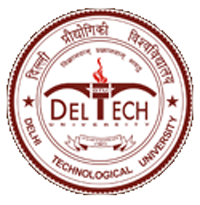Please use this identifier to cite or link to this item:
http://dspace.dtu.ac.in:8080/jspui/handle/repository/21804| Title: | SKIN LESION ANALYSIS USING DEEP LEARNING |
| Authors: | KUNTAL, YASH ARYAN |
| Keywords: | SKIN LESION ANALYSIS DEEP LEARNING LIGHTWEIGHT MODELS VISION TRANSFORMER (ViTS) CNN |
| Issue Date: | May-2025 |
| Series/Report no.: | TD-8015; |
| Abstract: | Skin cancer remains a significant public health problem worldwide, and appropriate and efficient diagnostic approaches are needed to benefit both patients and the healthcare system. Skin lesion categorization has been recently benefiting from deep learning methods, which, however, are facing challenges with regard to between-class similarity, within-class discrepancy, and scarcity of data. This thesis offers a concerted in-depth analysis on deep learning models for skin lesions of two primary contributions, namely a review of the literature, including 101 papers, and that we provide an empirical comparison with state-of-the-art models. Review of literature and state-of-the-art The literature review on recent developments from 2021 to 2023, feature learning, architectural innovations and data scarcity have been summarized. In particular, intra-class consistency mechanisms and hybrid architectures of CNNs and Transformers, knowledge distillation of lightweight models, and the method to tackle imbalanced dataset are the main focus. These observations reflect growing trends in the proposed papers, including the rise of self-supervised learning, multi-modal fusion, and domain-specific preprocessing for improved diagnostic accuracy. In the comparative study, performance of five architectures: ResNet50, DenseNet121, EfficientNet-B0, Vision Transformer (ViT-B/16) and Data-efficient Image Transformer (DeiT-S) is evaluated on the standard datasets, including HAM10000 in terms of accuracy, computational efficiency, and class imbalance. We empirically show that EfficientNet-B0 is the best trade-off between performance and computational cost, and DeiT-S learns better features with knowledge distillation. ViT-based architectures achieve comparable performance, but need rigorous data augmentations to cope with the overfitting problem. Key factors relevant to model scalability, data preprocessing and hybrid methods to meet the clinical deployment challenge are discussed in this study. Theoretical and empirical based computational approaches support the model selection and optimization for skin lesion analysis perspective in this work. Addressing weaknesses within the current literature, our results support the use of context-aware architectures and strong training procedures to improve diagnostic reliability in real-world healthcare environments. The results are intended for the guidance of future research happening in the field of automated dermatology; with a focus on pragmaticity, generalisation, and clinical applications. |
| URI: | http://dspace.dtu.ac.in:8080/jspui/handle/repository/21804 |
| Appears in Collections: | M.E./M.Tech. Computer Engineering |
Files in This Item:
| File | Description | Size | Format | |
|---|---|---|---|---|
| YASH ARYAN KUNTAL M.Tech..pdf | 3.85 MB | Adobe PDF | View/Open |
Items in DSpace are protected by copyright, with all rights reserved, unless otherwise indicated.



